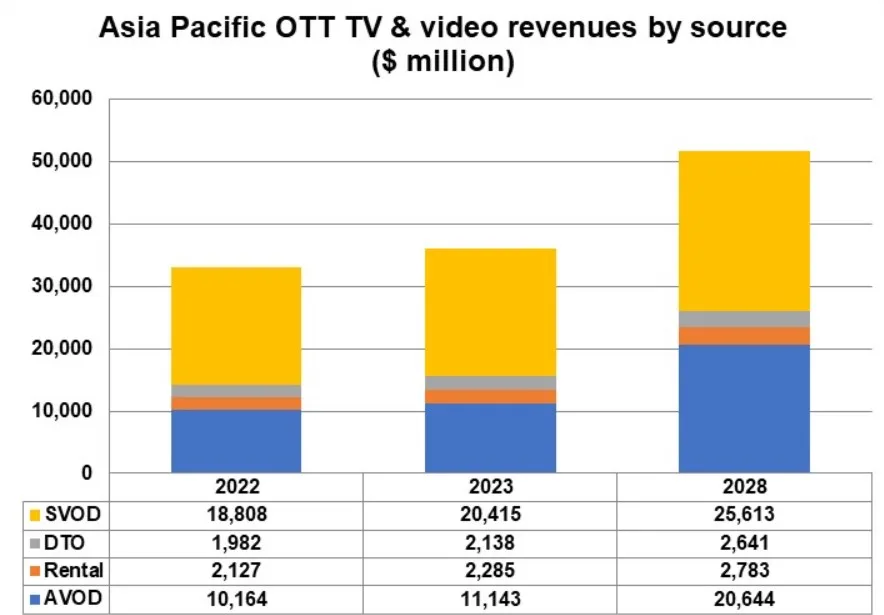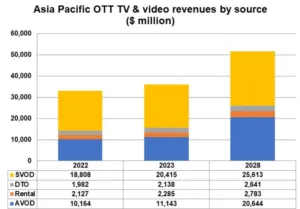The growth of the OTT (over-the-top) market in the Asia Pacific region is expected to continue, with revenues forecasted to reach $52 billion in 2028, a 56% increase from the $33 billion recorded in 2022. This significant growth is driven by increasing internet penetration, improved infrastructure, and the rising popularity of smartphones and smart devices across the region.

The additional $19 billion in OTT revenues will be distributed among several key markets. China is expected to contribute $4 billion to the growth, with its share of the region’s total revenues decreasing from 48% in 2022 to 38% in 2028. This decrease in market share indicates that other countries in the region are growing at a faster pace. India, South Korea, and Japan will also contribute significantly to the growth, with each adding $2 billion, $3 billion, and $4 billion, respectively.
Simon Murray, Principal Analyst at Digital TV Research, said:
Asia Pacific SVOD revenues overtook AVOD revenues in 2019, mostly due to the advertising downturn in China. AVOD will recover, but will remain lower than SVOD. SVOD and AVOD revenues will climb to $7 billion and $11 billion respectively between 2022 and 2028.
The rapid growth of OTT platforms in the Asia Pacific market can be attributed to several factors: Firstly, the expansion of international streaming platforms like Netflix, Amazon Prime Video, and Disney+ has been significant. These platforms have increased their presence in the region by offering localized content and competitive pricing strategies, attracting more subscribers.
Secondly, local streaming platforms, such as iQiyi in China, Hotstar in India, and Rakuten TV in Japan, are gaining traction. They provide a diverse range of content, including local language movies, TV shows, and sports events, catering to the tastes of regional audiences. Thirdly, government initiatives play a vital role in promoting the growth of the digital economy. Governments in the region are investing in infrastructure development, which in turn supports the expansion of OTT services.
Fourthly, the growing middle class in the region has increased the demand for quality content. This demographic group is willing to pay for premium services, driving the growth of the OTT market. Lastly, technological advancements have also contributed to the market’s expansion. The widespread adoption of 4G and 5G networks, combined with affordable smartphones and smart devices, has made it easier for consumers to access OTT content.

